Brain Balm
I have been hearing quite a few intriguing radio segments on neurobiology (in its lowest common denominator form – I’m sure) and how our brains are happy and soothed by crafts (A rehash of the “This is Your Brain on Crafts” article of last year). No surprise – I always maintain that any costs I incur with my weaving obsession must be less than the cost of therapy I would need without it. But I have been dragged away from the loom lately by many editing/drafting/planning/writing jobs that make me think about the incredible richness of weaving as “brain balm”.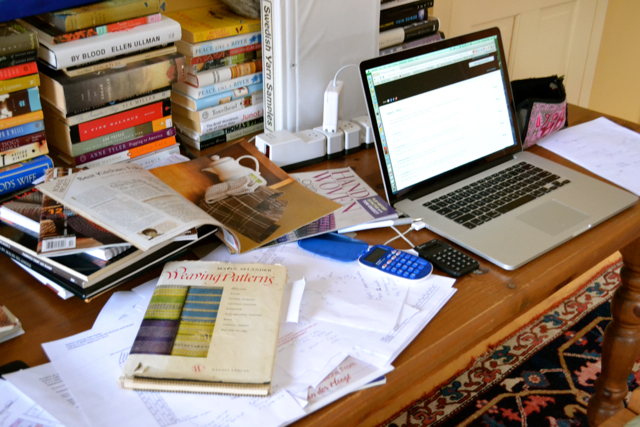 This has been my loom substitute lately.
This has been my loom substitute lately.
It is amazing that if you “weave”, you may find yourself cracking the chemistry of dyes, handling and learning the many facets of fleece, messing with math, considering color theory and delving deeply into drafting – all this in addition to sitting at the loom and meditatively making cloth. It really is a hobby/vocation/avocation that has something for every part of your brain. I have been particularly aware of this as I develop projects for the “Moving Threads” class I will be teaching at Vav Stuga in the fall. “Moving Threads” is a great, wide open playground. And it is really gratifying to be able to sweat at the computer until I am burned out on drafting and planning (changing from the U.S. Standard measurement system to metric, rising to sinking and draw down to draw up – is definitely a brain throb!) shift gears into winding a warp and watching the colors come together, finish just when it is getting too boring to endure, then get to dress the loom and look forward to the rhythmic, soothing, largely brain-freeing activity of actually weaving the cloth.
I have been gathering drafts that have a float/plain weave juxtaposition that allows for the shifting, curving effects that I like so much.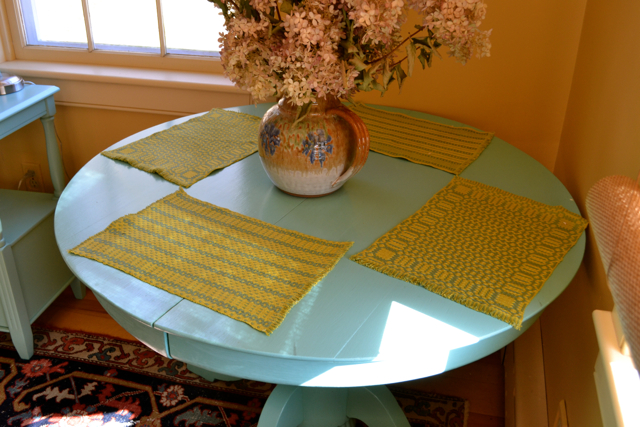
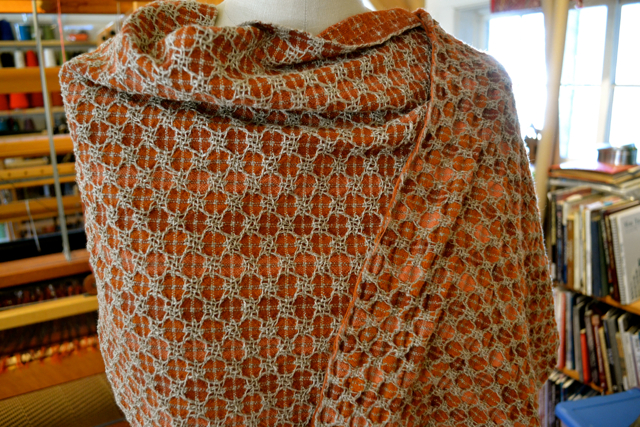
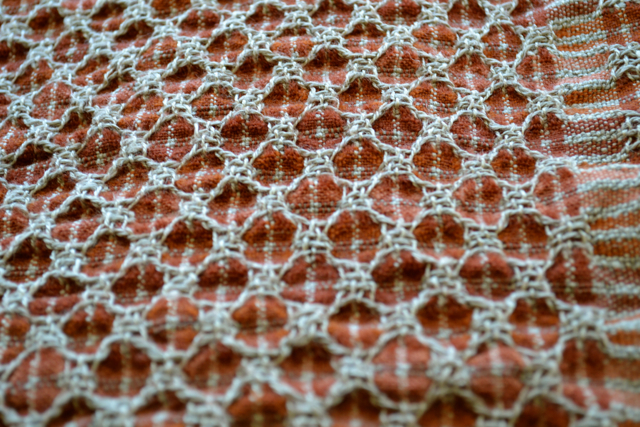
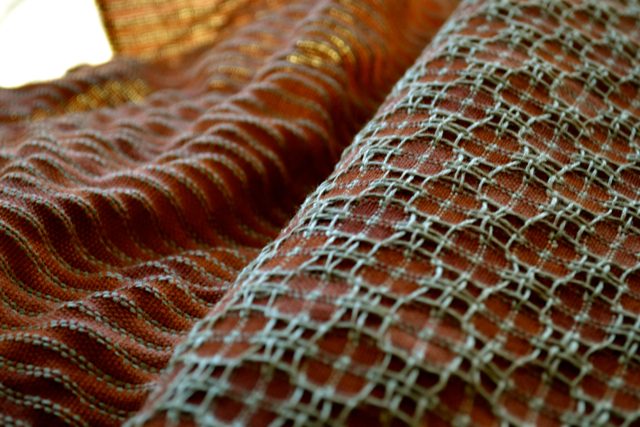
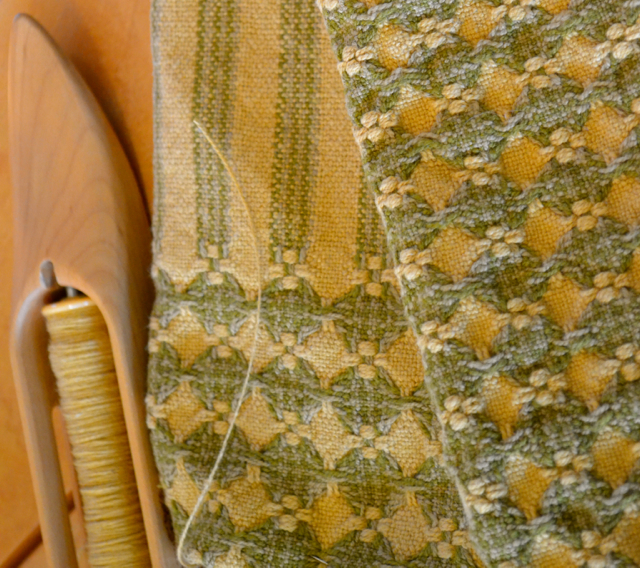
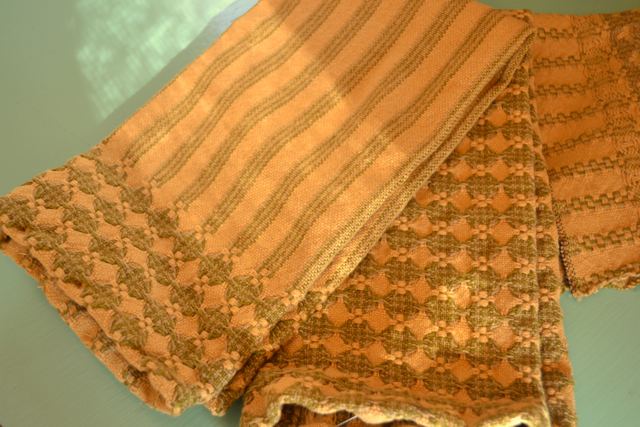 And have been finding a treasure trove. Some are from Swedish and Danish weaving books that I got a chance to peruse at Vav Stuga (Becky’s library is one of the unbelievable benefits of weaving at Vav Stuga!) And some are drafts I have developed, and some are old drafts that I have seen updated in wonderful modern ways by designers like Eleanore Pritchard and Margot Selby. By September I am hoping to have a really varied, beautiful selection of projects. Exciting!
And have been finding a treasure trove. Some are from Swedish and Danish weaving books that I got a chance to peruse at Vav Stuga (Becky’s library is one of the unbelievable benefits of weaving at Vav Stuga!) And some are drafts I have developed, and some are old drafts that I have seen updated in wonderful modern ways by designers like Eleanore Pritchard and Margot Selby. By September I am hoping to have a really varied, beautiful selection of projects. Exciting!
New weaving question:
What are the arguments for and against beating on an open or closed shed. I typically beat on an open shed, but am changing sheds while the beater is traveling. Becky, who was a production weaver for many years (and is FAST!) does a kind of double beat – she places the weft in the shed, changes shed and then beats. The first placement isn’t really a beat, but it gets the weft in position for the beat. Most of my looms are jack, and Becky’s are countermarch/counter balance. Hmmm – should that make a difference? Laura Fry has a good video of how she beats (and she is also FAST!) here: http://laurasloom.blogspot.com/2009/07/wider-weaving.html

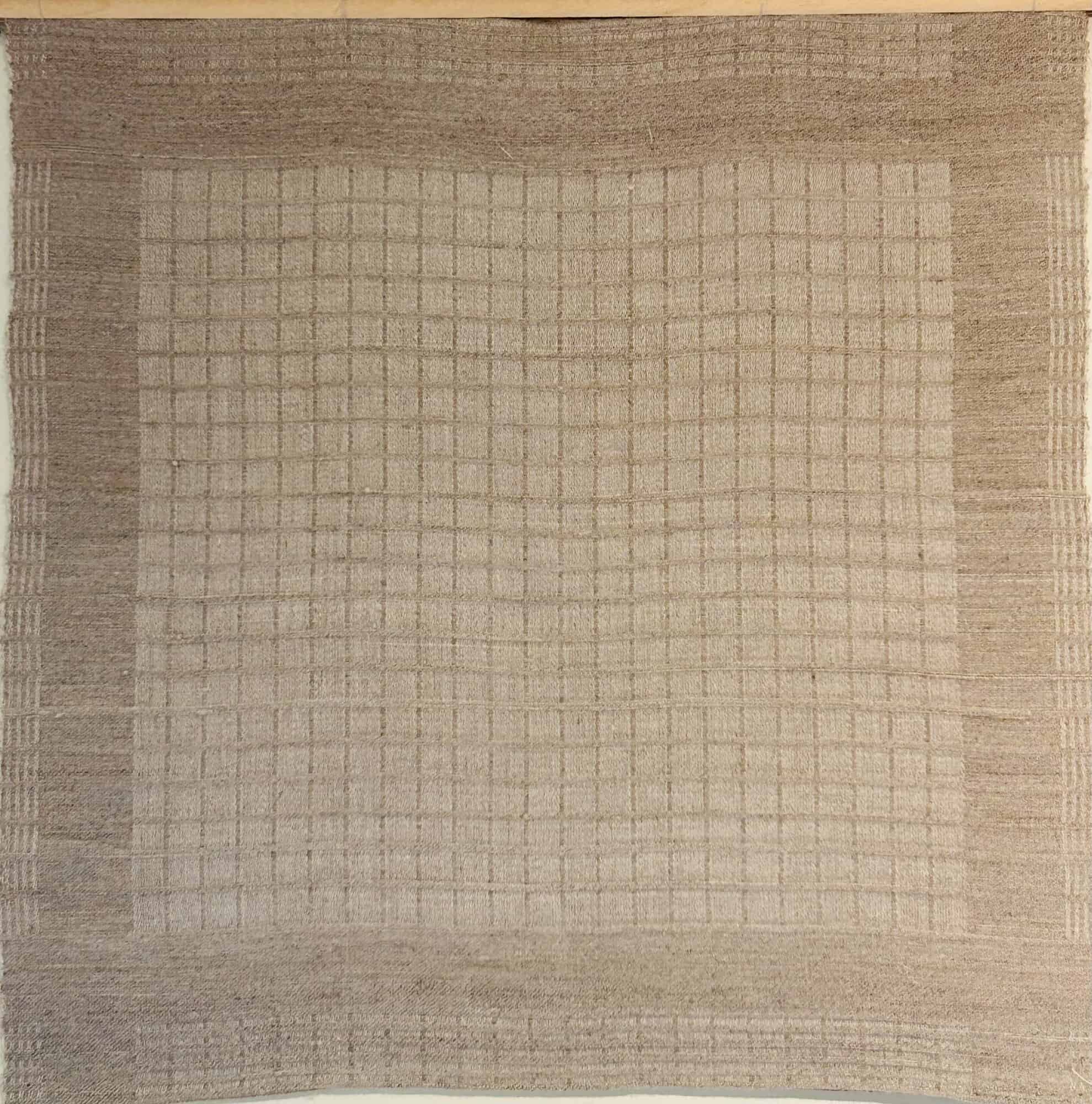
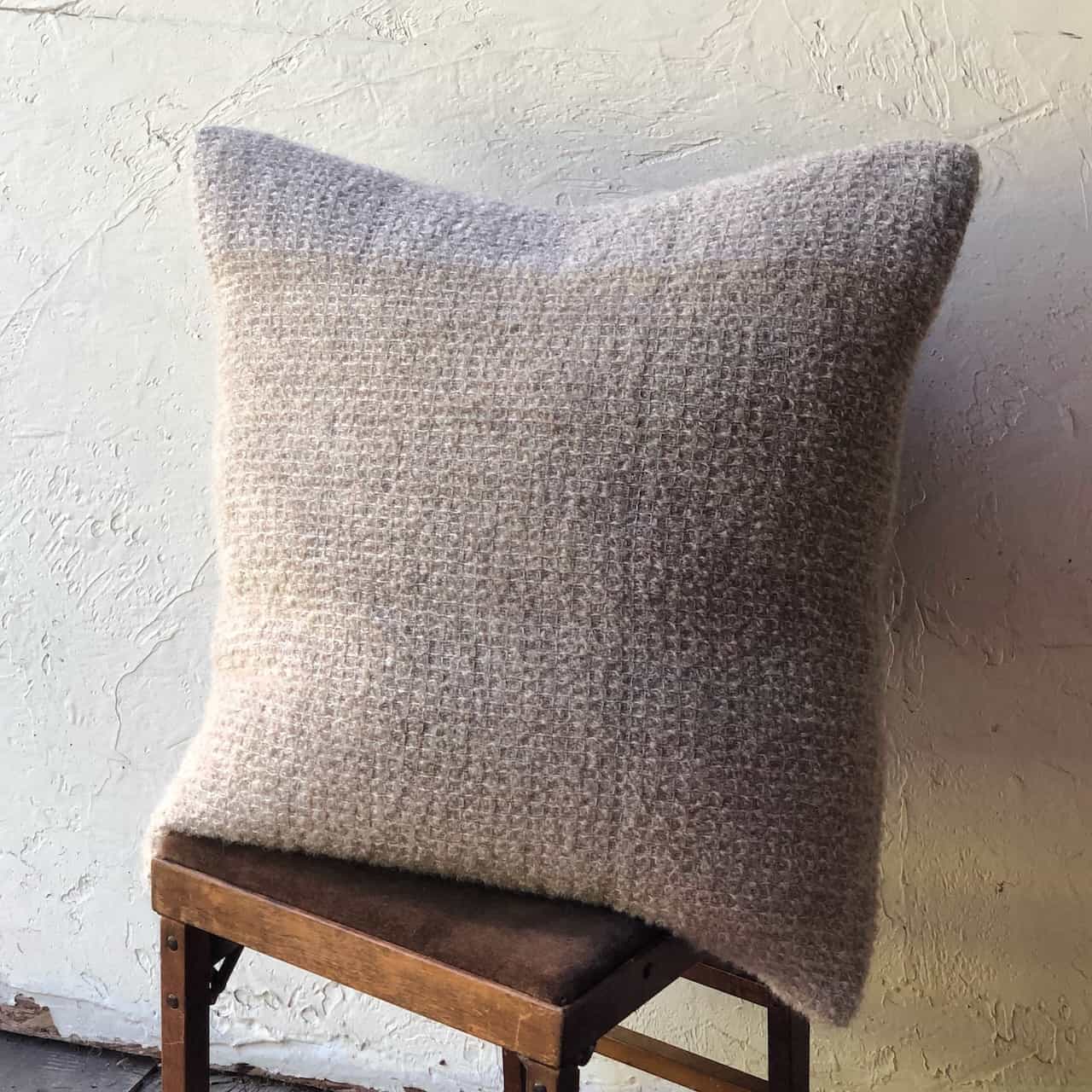
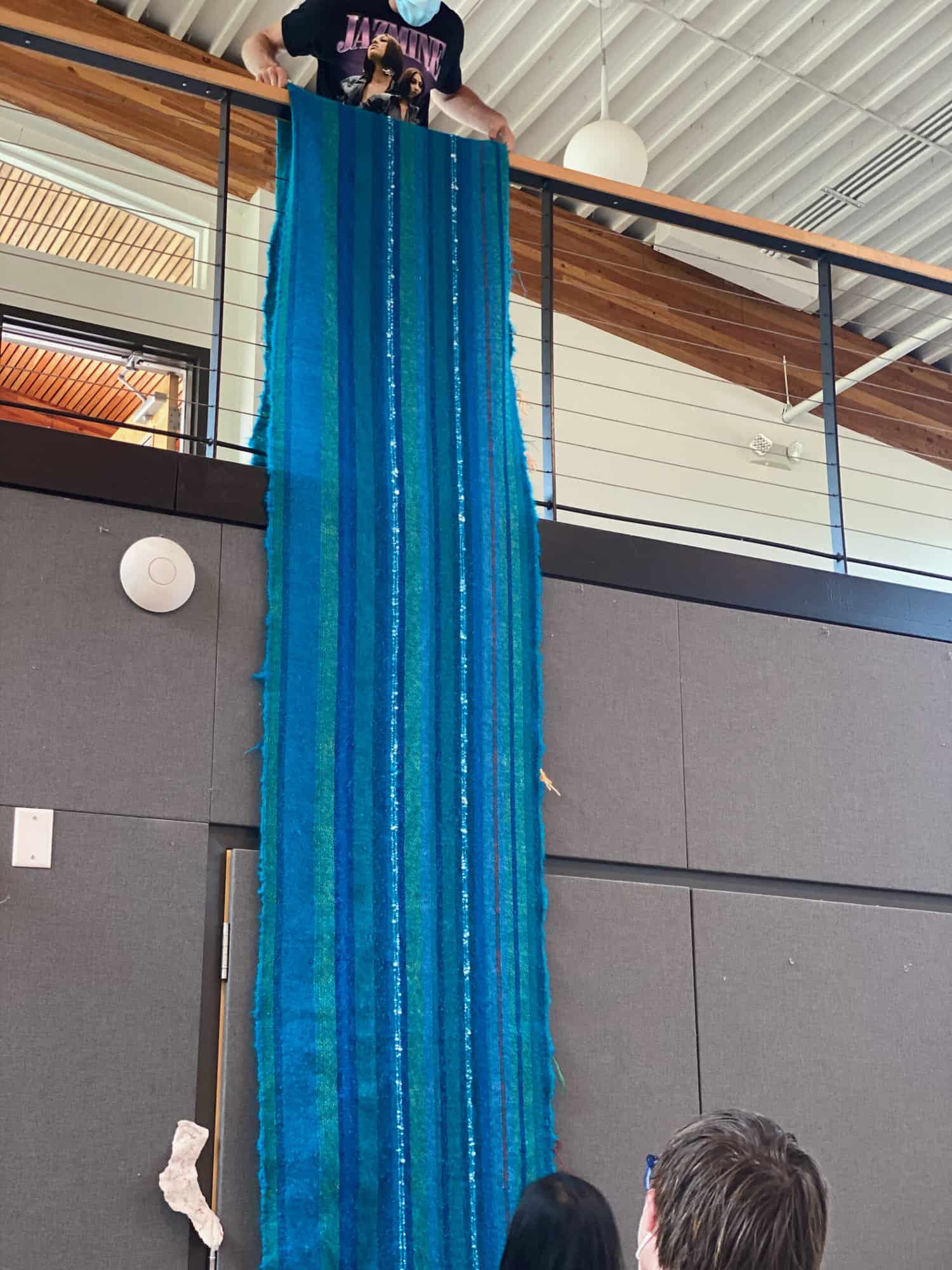
Kaz Madigan
Absolutely love your exquisite work. So inspirational! With beat – a closed shed seems to prevent overbeating for me – at least in theory. However, when I studied at Kawashima in Kyoto they did the placement beat on the open shed then another on the closed shed as a convention throughout the school. We were using Leclerc jack looms too.
Elisabeth Hill
Hi Kaz,
Thanks for visiting, and back at you!! I looked at your site, and was transported. I am really curious about where you studied in Japan? I lived in Japan years ago, and have always dreamed of returning on a weaving visit. I know that many modern Japanese weavers studied in Sweden . . . I wonder if the double beat is a coincidence/part of that exchange or just an effective method???
Debbie
Another fun question! I vary my beat depending on the fiber and density of cloth woven. Open or moderate sett wool seems to only need a single beat on an open shed. It sticks to itself readily. Linen and other stiff yarns always seem to need a double beat with the second on a closed shed like Becky does. Open gauzy cloth seems to be best with a light placement on an open shed and change shed with the beater at the shed line. Dense cloth like a worsted wool suiting seems best with a more sturdy double beat.
I make no claims for speed of weaving. 🙂 I’m not the slowest, but it just doesn’t matter to me that much.
Ditto re Kaz Madigan. I’ve loved her website (silently) for years.
Elisabeth Hill
Good beating info – thanks Debbie. Are you predominately jack or countermarch/balance? Type of loom doesn’t seem to be the main variable, but I am curious. Perhaps width of cloth vs width of beater would be a more important variable (along with fiber/sett).
Valerie
Hi Lisa, the samples for the Vavstuga class are exquisite!! What fun!!
I beat on a closed shed.
My reasons:
I weave on jack looms and there is no way that I am coordinated enough to be exerting pressure with one leg, pulling the beater with one arm, and be able to hold the shuttle hand still. If I’m exerting effort with two of the extremities the third one will give a tug on that weft that takes out the slack and often pulls too tight on the opposite selvedge.
I can see where the low effort of treadling on a Swedish loom would be less of a problem.
My second reason is that when weaving a fabric that has a warp or weft faced edge, the fabric curls at the edge. Closing the shed levels that out and gives me a better selvedge.
But alas, I am not a fast weaver and will not likely ever be fast.
Elisabeth Hill
Hi Again Valerie,
Are things warming up in the north country? Thanks for the comment – is it all the way closed as in- open, throw, close, beat? Or is it open, throw, change and beat on the next open shed?
Valerie
It’s closed. My foot is off the last treadle and resting on the next treadle….as in open-throw-close-beat.
Full disclosure.. in my first weaving classes, I was taught to double beat, where I do a second beat when the next shed is opened.
Yes…it is warming up. 70 degrees today…grass is beginning to green. Crocuses are blooming, but not much else. 1-3″ of snow in tomorrow’s forecast ;(
Elisabeth Hill
Hey V,
Glad the temps/croci are up, but I really love the “ode to winter” scarves on your blog. Giving in may be the only thing that brings spring!